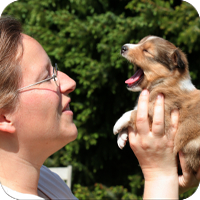
Buying from a reputable breeder gives you the opportunity to interact with the pets family, siblings, dam, also possibly the sire. You can, therefore, form a general impression of what the future holds for the pet you take home.
A responsible breeder is a good source for a well-bred, healthy pet. The breeder will carefully select the parents to emphasize desirable attributes and minimize faults in their progeny. Some people breed animals only to produce pets to sell. These individuals have no regard for the advancement of that breed; they are motivated solely by profit. Responsible breeders will never breed without considering the advancement of the breed. Each generation should improve the quality of breeding stock, resulting in healthy animals with improved breed soundness- that is, physical and mental health- that are an advancement toward the ideal.



